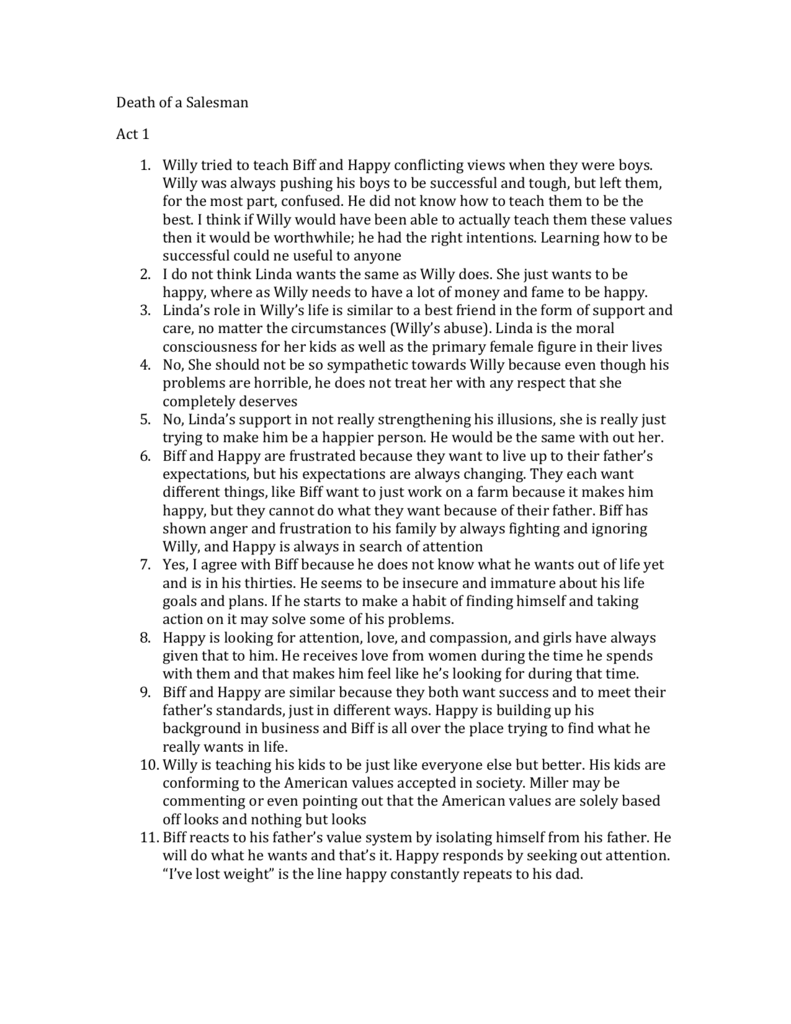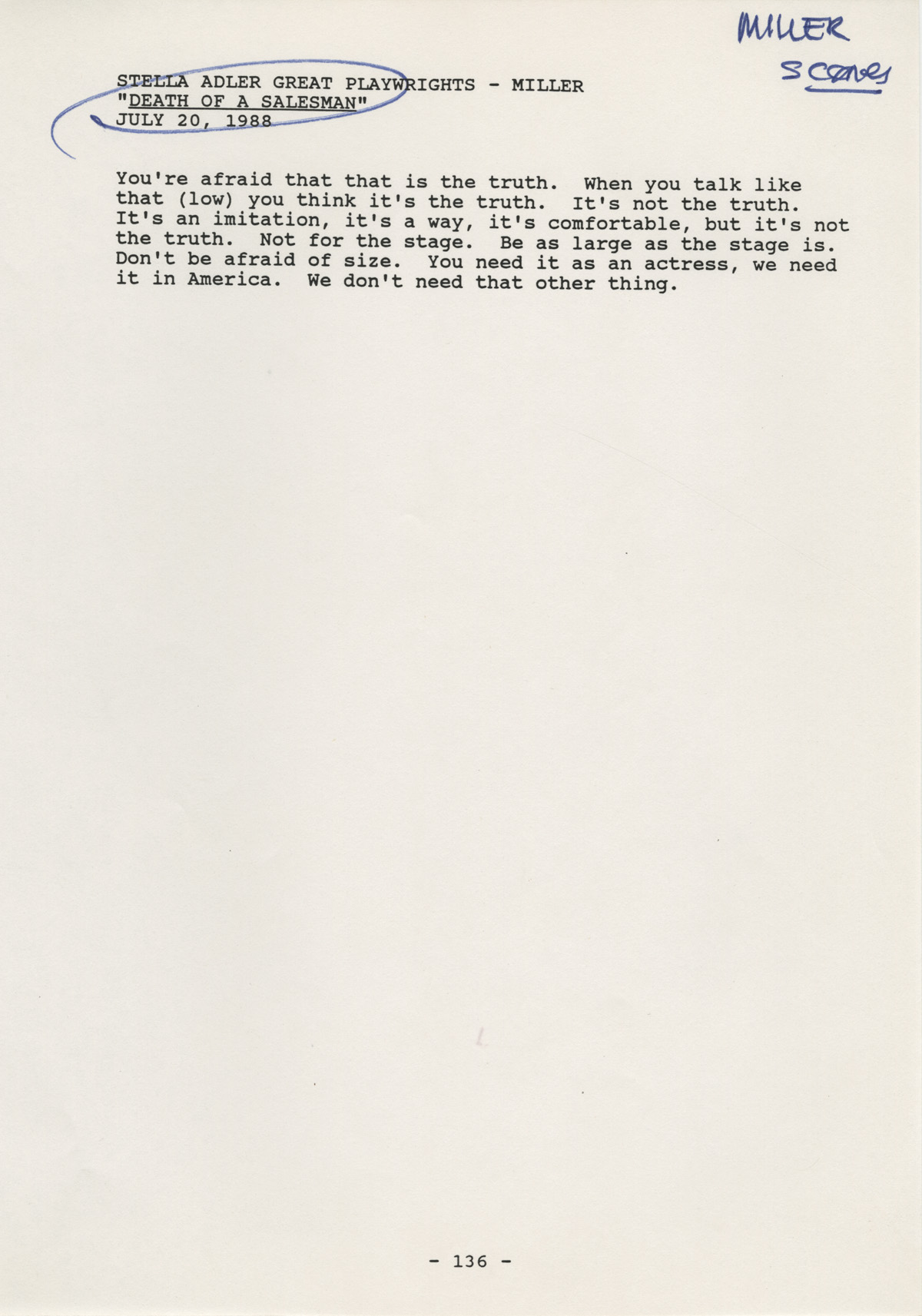


In the Ransom Center’s Stella Adler collection, there is a compilation of papers from her acting classes on Death of a Salesman. Her character is defined by the psychology of caretaking-finding optimism in the darkest of situations and protecting the falling loved one from any form of hurt.

However, Miller’s stage directions and subtly in Linda’s lines, combined with the material available in the archive, reveal that she is not merely a plot device, but a wife and a mother who is fighting against the inevitable. They characterize Linda as a slipper-bearing doormat who is only defined by domesticity, obedience, and a lack of self-respect. Not only are there very few women in the play, critics say, they are completely steamrolled by Willy’s selfishness and lack of respect. Many critics of the play comment on the patriarchal, abusive, and detrimental behaviors of Willy that bring down those around him and take away authority from characters that could rise above the play and stand up for themselves-specifically the play’s women. With almost seven decades of performances, what new effects can this play have on audiences, besides the ever-relative commentaries on capitalism? This question is what brought me to the archive at the Harry Ransom Center. Below, Williams shares his experience in the class.Ībout 65 years after its publication, Arthur Miller’s Death of a Salesman remains one of the most recognizable pieces of American theater, telling the tragedy of Willy Loman as he falls from success and brings down his family with him. In the class, students used resources at the Harry Ransom Center to better understand plays, texts, dramatists, cultures from which they are drawn, and the archival process itself. Elon Lang’s “Drama in the Archives” course. Kenneth Williams is an English and Plan I Honors student in Dr.


 0 kommentar(er)
0 kommentar(er)
